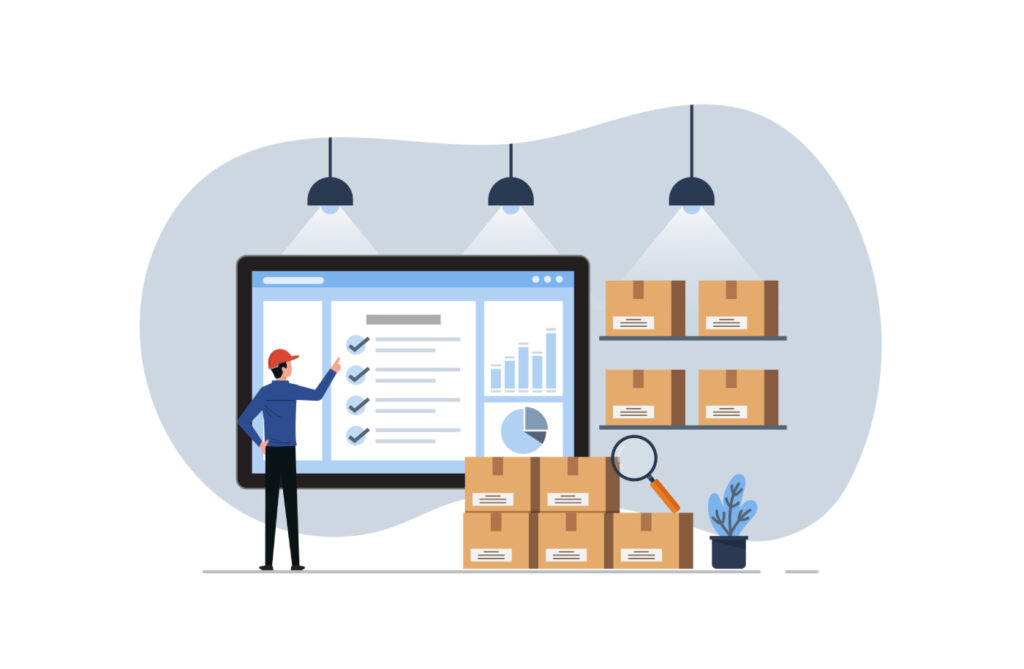When you run a business, choosing the right card reader for your Android device is crucial for businesses of all sizes. It can make a big difference in how smoothly you handle payments and keep your customers happy. This guide will help you pick the best card reader to pair with your Android smartphone, whether you’re a solo entrepreneur or part of a larger company.
Based on our comprehensive analysis of industry leaders in the space, here are our top seven choices for credit card readers for Android in 2024:
Keep reading to learn about the key features to look for in card readers. We’ll also examine how durable and user-friendly different models are and how well they work with Android devices. The apps that come with these readers are just as important, so you’ll get a rundown of their interfaces and functions.
We’ll also explain the costs involved, including processing fees and any hidden charges. You’ll also learn about payout times so you know when to expect your money. If you need your card reader to work with other business software, we’ll cover that, too.
By the time you finish reading, you’ll have a clear picture of the best Android card readers on the market. This information will help you make a smart choice that fits your business perfectly.
Also Read: Best Credit Card Readers for Small Business
Credit card readers for Android
Card Reader
Our Rating (Out of 5)
Key features
Price

Square Reader
4.43
- Supports EMV chip cards and NFC payments (Apple Pay, Google Pay)
- Improved battery life
- Enhanced security
- Bluetooth Low Energy 5.3
- Integrates with Square’s business tools
- Free magstripe reader at sign-up
- $59 for Contactless and Chip reader
- Transaction fees: 2.6% + 10¢ per transaction
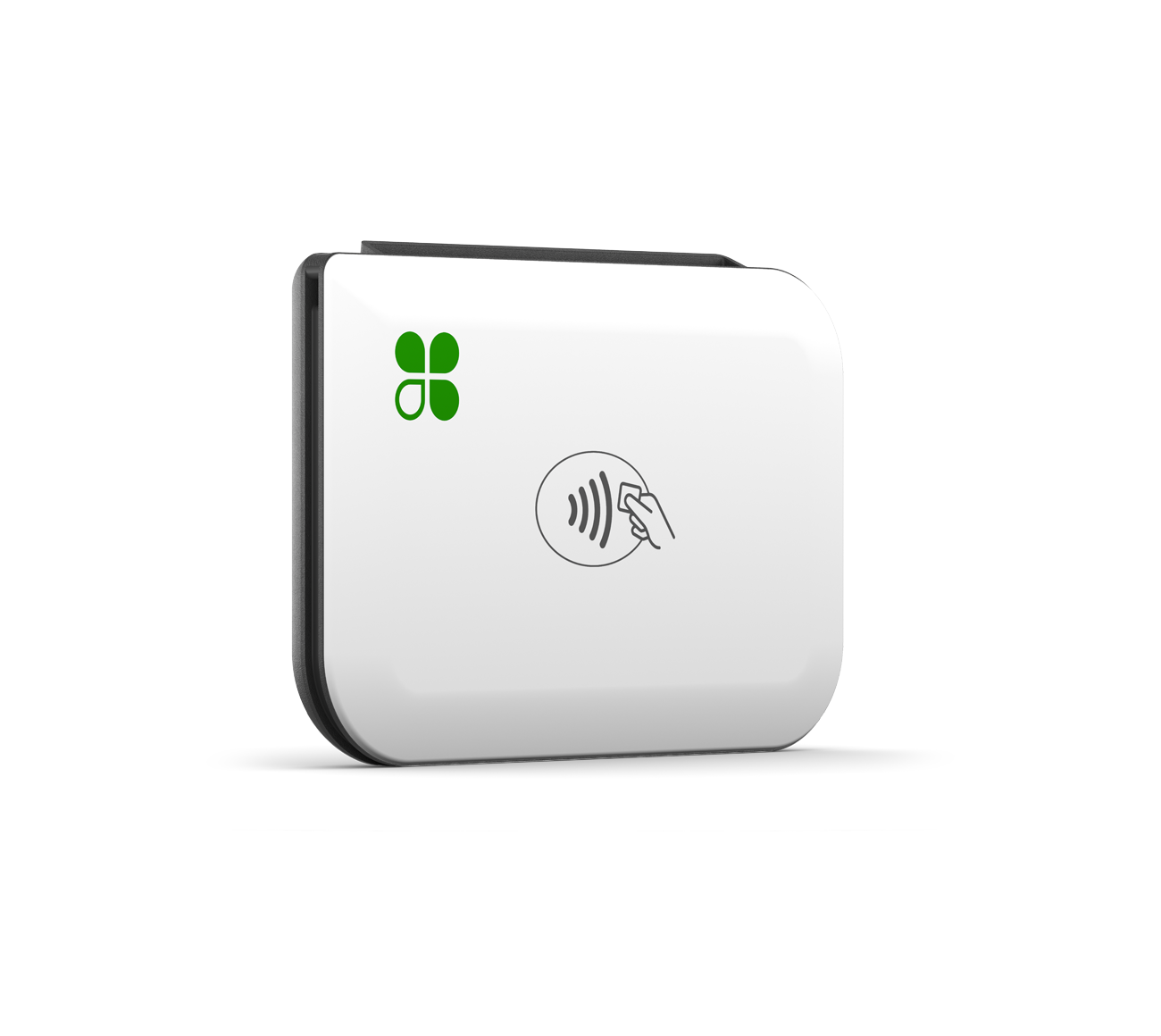
Clover Go
4.31
- Accepts magstripe, EMV chip, and contactless payments
- Integrates with Clover suite
- Extensive CRM features
- Customizable tax and tip rates
- $49 for reader
- Transaction fees: 2.6% + 10¢
- Essentials Plan: $14.95/month
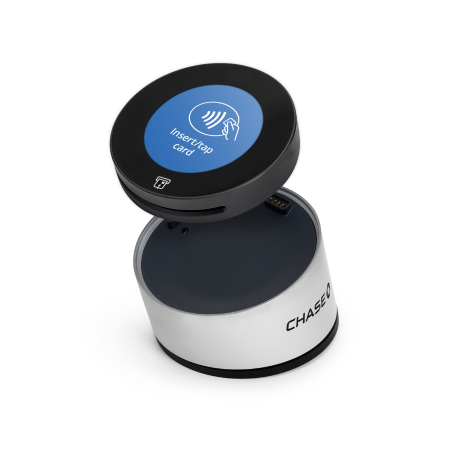
Chase Payment Solutions
4.17
- Same-day deposits
- Competitive rates
- Versatile mobile POS system
- Integrates with various enterprise systems
- Pricing available upon request
- Transaction fees: 2.6% + 10¢
- Monthly fees starting at $9.95
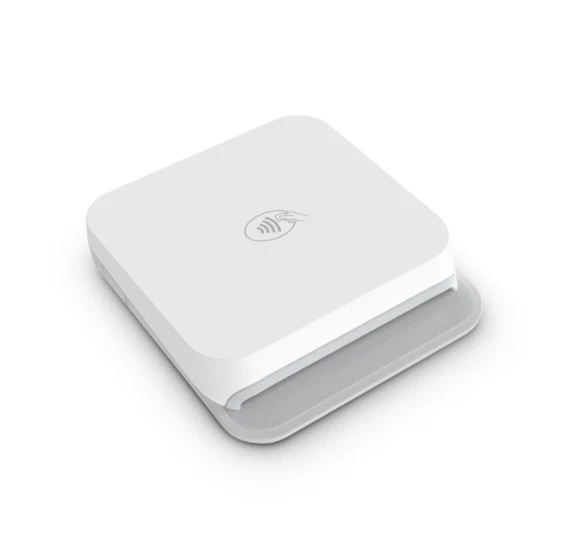
Stripe M2
4.01
- Bluetooth LE connectivity
- Supports EMV chip, contactless, and magstripe payments
- End-to-end encryption (E2EE) and P2PE-ready
- Long battery life
- Compact and lightweight
- Integrates with Stripe Terminal SDK
- $59 for reader
- $19 for dock
- Transaction fees: 2.7% + 5¢ per in-person transaction
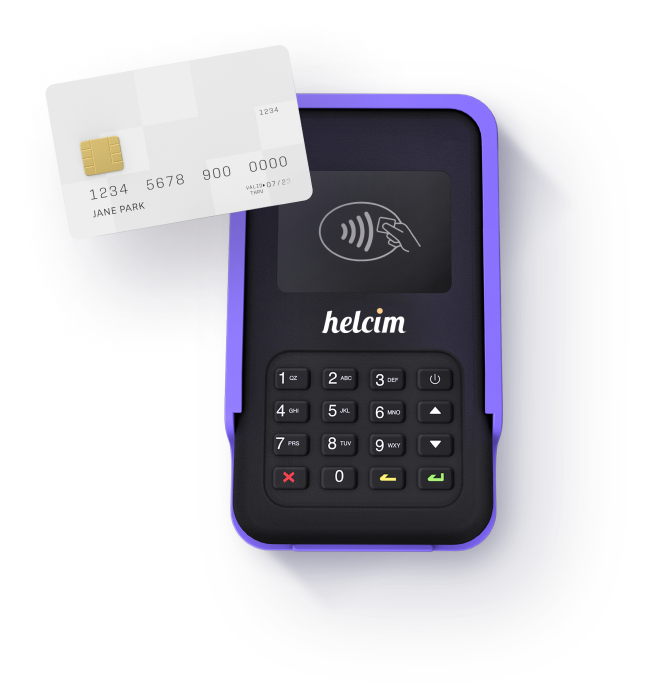
Helcim
3.99
- Interchange plus pricing
- Bluetooth and USB connectivity
- Supports tap, chip & PIN
- Comprehensive POS app
- Long battery life
- $99 for reader
- Transaction fees: Interchange + 0.3% + 8¢ per in-person transaction

SumUp
3.89
- No fixed costs
- Supports various payment methods
- Bluetooth connectivity
- Long battery life
- Standalone option with Solo model
- Digital and physical receipts
- $39 for SumUp Plus
- $99 for SumUp Solo
- Transaction fees: 2.6% + 10¢

Shopify
3.89
- Accepts multiple payment methods
- Integrated with Shopify POS
- Portable and ergonomic design
- PCI DSS compliant
- Easy setup
- Free and expedited shipping
- $49 for Tap & Chip Card Reader
- $89 for reader with dock
- Transaction fees: 2.4% – 2.7% per in-person transaction
- POS Pro: $89/month
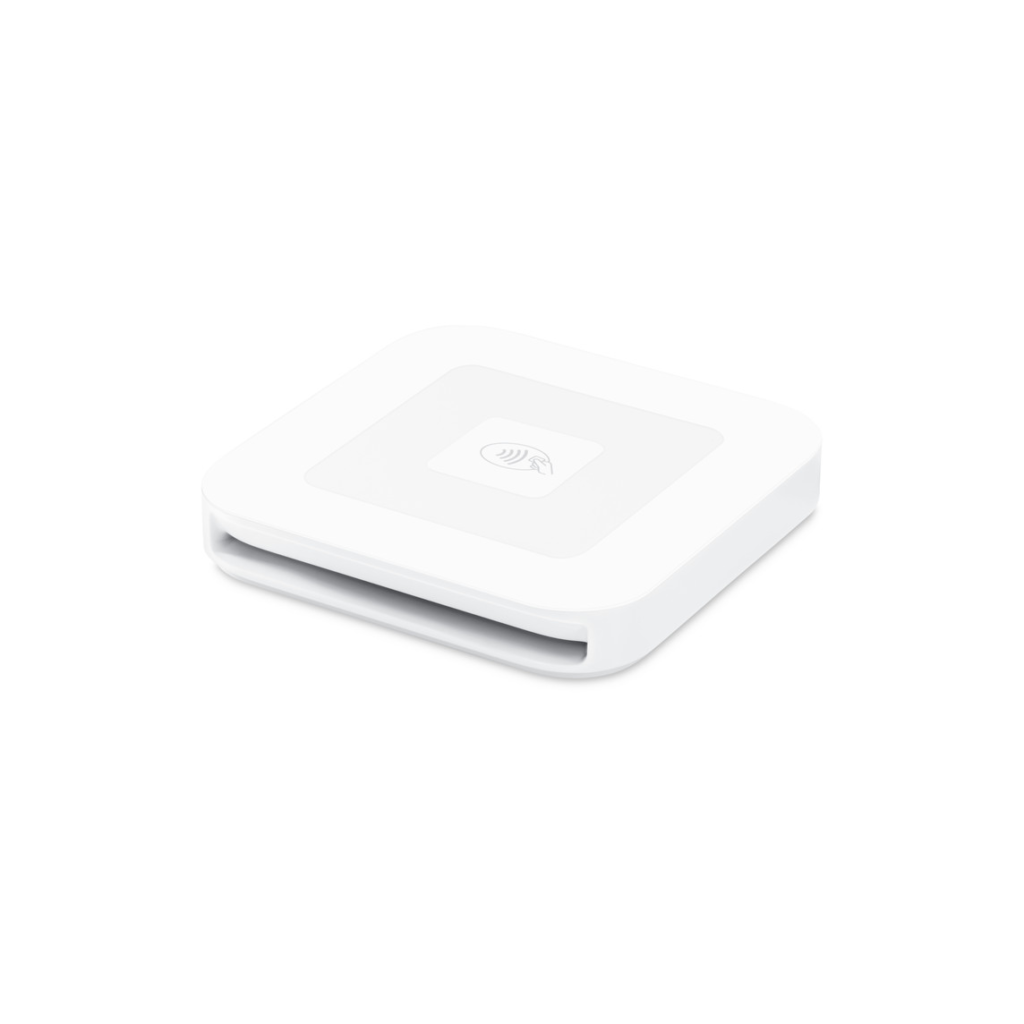
Square Reader: Best for all-around use
Overall Score
4.43/5
Pricing
5/5
Hardware
4.17/5
Features
4.69/5
Stability and security
3.33/5
UX
4.38/5
User Reviews
5/5
Pros
- Comprehensive POS app for Android
- No monthly fees
- Competitive transaction rates
Cons
- Locked into Square payments
- Users reported lengthy holds on funds in some cases
Why we chose Square Reader
The Square Reader takes the top spot for all-around use, offering a combination of affordability, versatility, and advanced features that make it suitable for businesses of all sizes.
The first factor many users notice is its cost-effectiveness, with a free magstripe reader and no monthly fees. This makes it a particularly attractive option, especially for small businesses. The reader accepts a wide range of payment methods, including EMV chip cards and contactless options like Apple Pay and Google Pay, giving your customers flexibility in how they pay.
Square’s latest reader boasts improved technology, with longer battery life and enhanced Bluetooth connectivity, allowing for more reliable operations. Beyond just processing ecommerce payments, Square provides a comprehensive business solution, offering tools for invoicing, analytics, and specialized features for retail and restaurant businesses.
This integrated ecosystem sets it apart from competitors that focus solely on transactions. While some users have reported occasional issues with fund holds, Square generally offers quick access to your money with next-day transfers to your bank account. When compared to alternatives like Clover Go, PayPal, Helcim, or Stripe M2, Square often emerges as the top choice due to its balance of features, pricing, and overall functionality.

Clover Go: Best for comprehensive mobile business management
Overall Score
4.31/5
Pricing
3.33/5
Hardware
5/5
Features
4.38/5
Stability and security
3.75/5
UX
4.38/5
User Reviews
5/5
Pros
- Accepts magstripe, EMV chip, and contactless payments
- Encryption and tokenization for secure transactions
- Customizable app
- Positive customer support reviews
Cons
- Monthly fee for advanced features
- Extra cost for additional hardware
Why we chose Clover Go
Clover Go provides significant value through its integrations, security, CRM tools, and detailed analytics, making it a powerful choice for businesses that need a versatile, extensive, and secure mobile payment solution.
Unlike Square, which is designed for beginners with a simpler setup and no monthly fees, Clover Go caters to businesses with higher transaction volumes and specific needs. Its extensive integration capabilities allow seamless syncing with other Clover products and the Clover App Market, facilitating efficient data management and operations. This integration flexibility outshines competitors like Square, which is limited to its own ecosystem.
Additionally, Clover Go offers superior security features, including end-to-end encryption, tokenization, tamper-detecting sensors, and two-factor authentication, making it ideal for businesses that prioritize transaction security. In contrast, while Square offers solid security, it does not match Clover Go’s comprehensive measures.
Clover Go also provides advanced CRM tools, such as email lists, loyalty programs, and gift cards, to help businesses engage and retain customers, a feature set more extensive than Square’s. Its detailed reporting and analytics tools enable businesses to track revenue, analyze sales data, and monitor performance across multiple locations, supporting better business decisions. Square’s reporting capabilities are solid but lack the depth and flexibility of Clover Go.

Chase Payment Solutions: Best for fast access to funds
Overall Score
4.17/5
Pricing
4.58/5
Hardware
3.33/5
Features
4.38/5
Stability and security
4.58/5
UX
4.38/5
User Reviews
3.75/5
Pros
- Funds available same day
- Competitive mobile processing rates
- No contract requirement
- Integrated business insights
- Multiple payment options
Cons
- Limited hardware options
- Higher keyed transaction fees
Why we chose Chase Payment Solutions
Chase Payment Solutions is a top choice for businesses prioritizing quick access to funds. The same-day deposits at no extra cost when using a Chase business checking account is a feature that outperforms competitors like Square and Clover. This rapid fund availability can be crucial if you need immediate access to cash for daily operations.
The service offers competitive transaction fees, with rates of 2.6% + 10¢ for dip, swipe, and tap transactions and 3.5% + 10¢ for manual entries and payment links. Most businesses won’t face monthly fees, potentially reducing your fixed costs. Chase also provides strong security measures, including PCI compliance, real-time fraud monitoring, and advanced encryption, helping you to protect customer data and maintain trust.
Through the Chase POS app and Card Reader, you have access to an integrated suite of tools for managing your product catalog, inventory, and employee access, all from your smartphone. This integration offers more flexibility than some competitors like PayPal.
However, Chase’s limited POS hardware options compared to specialized POS systems like Clover might be a drawback if you need a wider range of physical payment solutions.

Stripe M2: Best for online businesses
Overall Score
4.01/5
Pricing
4.58/5
Hardware
5/5
Features
4.06/5
Stability and security
4.17/5
UX
5/5
User Reviews
1.25/5
Pros
- Compact and portable
- Versatile payment types
- Seamless Bluetooth connectivity
- End-to-end encryption
- Integration with Stripe ecosystem
- Up to 28 hours of battery life
Cons
- Not liquid-proof
- Customization limited for on-receipt tipping
Why we chose Stripe M2
If you’re running an online business, Stripe Reader M2 might be your best bet for handling payments. It’s designed to work seamlessly with Stripe’s online tools, which is great if you’re selling products or services on the internet. You’ll pay 2.9% + 30¢ for online transactions and 2.7% + 5¢ when you use the Stripe Reader M2 in person. These rates are competitive, especially if you’re dealing with customers from around the world.
The reader itself is a unique selling point. It’s small enough to carry around easily and can handle chip cards, contactless payments, and old-school magstripe swipes. Plus, it uses Bluetooth to connect to your devices, so you won’t be tangled up in wires. You can use it for up to 28 hours on a single charge, which is handy if you’re out and about all day catering, in a food truck, or for any mobile business.
Concerning security, they’ve built in some heavy-duty encryption to keep your customers’ data safe. This is crucial if you want to build trust with your shoppers.
Now, setting up Stripe might take a bit more work than some other options out there. But if you’re tech-savvy or have a developer on your team, you’ll appreciate the flexibility. You can really customize how Stripe works with your business, which is great if you have specific needs or want to create a unique checkout experience for your customers.

Helcim: Best for low transaction fees
Overall Score
3.99/5
Pricing
4.58/5
Hardware
4.17/5
Features
4.38/5
Stability and security
4.58/5
UX
5/5
User Reviews
1.25/5
Pros
- Transparent interchange plus pricing
- No monthly fees
- Comprehensive mobile support
- Integrated fraud protection
- Supports tap, chip & PIN, and PIN debit transactions, as well as inventory and customer tracking
Cons
- Upfront hardware investment
- Limited use for international businesses
Why we chose Helcim
If you’re looking to keep your transaction fees low, Helcim might be the perfect fit for your Android-based business. They use a pricing model called interchange-plus pricing, which means you pay the true cost of processing plus a small markup. This can save you a bundle, especially if you’re processing more than $5,000 a month.
You’ll pay 0.3% + 8¢ for in-person transactions and 0.5% + 25¢ for online or phone orders on top of interchange fees. Compare that to flat-rate providers like Square, and you could see some serious savings. Plus, there are no monthly fees or long-term contracts to worry about, so you’re not locked into anything.
When it comes to actually taking payments, Helcim’s got you covered with its Card Reader and Smart Terminal. They can handle many types of payments—tap, chip, and PIN, even mobile wallets.
Now, if you’re just starting out and processing less than $5,000 a month, Helcim might not be the most cost-effective option for you. But as your business grows, you will quickly start to see the benefits of their pricing model.

SumUp: Best for small businesses on a budget
Overall Score
3.89/5
Pricing
4.17/5
Hardware
4.17/5
Features
4.38/5
Stability and security
3.75/5
UX
4.38/5
User Reviews
2.5/5
Pros
- No monthly fees
- Long battery life
- Supports various payment methods
- Free, smooth mobile app
Cons
- Higher hardware cost for advanced models
- Advanced POS capabilities require premium plan
- Higher transaction fees
Why we chose SumUp
If you’re running a small business on a tight budget, SumUp might be the perfect card reader for you. They offer two main options: the SumUp Plus for about $39, which connects to your smartphone via Bluetooth, and the SumUp Solo for $99. The Solo is pretty nifty—it works on its own with built-in WiFi and a SIM card, so you can take payments anywhere without needing your phone.
One of the best things about SumUp is its straightforward pricing. There are no monthly fees to worry about—you’ll just pay 2.6% + $0.10 per transaction when you’re face-to-face with customers. This keeps things simple and predictable for your budget. If you’re processing a lot of payments, they do have a premium plan called SumUp One for $29 a month that drops your fees to 0.99% and gets you paid faster.
The free SumUp app covers most small business needs. It handles all the types of payments you could encounter—magstripe, chip, contactless, and even Google Pay and Apple Pay. You can also use it to keep track of your inventory, send invoices, and email or text receipts to your customers. It’s a solid all-in-one package that doesn’t require any extra investment.
Now, SumUp isn’t perfect. Their customer support isn’t available 24/7, and they don’t have a live chat option. Also, if you’re looking to do a lot of online selling or need advanced marketing tools, you might find SumUp a bit basic. Their app has some basic CRM and loyalty program features, but it doesn’t integrate with more advanced marketing tools or offer extensive customization for e-commerce.
Compared to some other credit card payment apps, like Helcim, SumUp is more straightforward. Helcim has some great features like advanced invoicing, detailed reporting, and customer management tools, plus low transaction fees. But it comes with higher upfront costs that might not work for you if you’re just starting out or running on a tight budget.
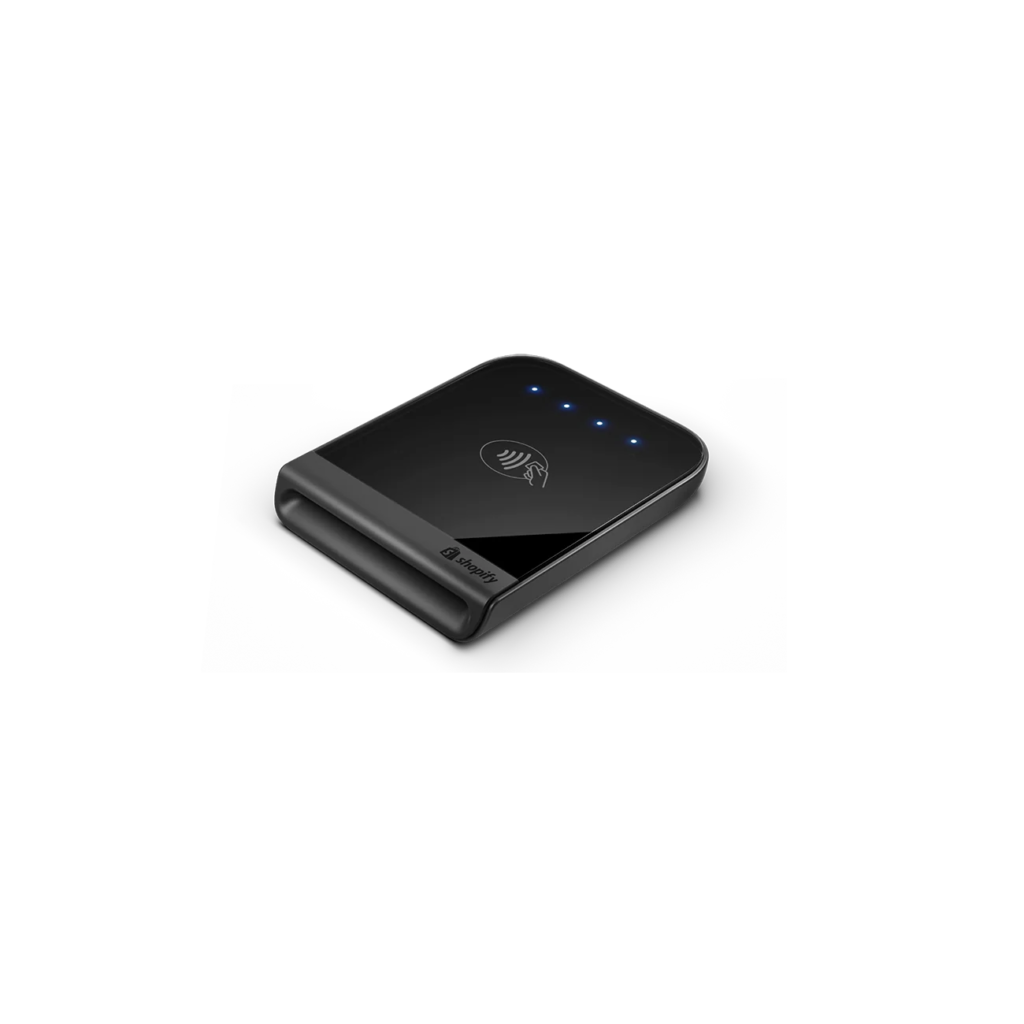
Shopify: Best for e-commerce integration
Overall Score
3.89/5
Pricing
3.75/5
Hardware
4.17/5
Features
3.75/5
Stability and security
4.17/5
UX
5/5
User Reviews
2.5/5
Pros
- All-in-one payment/POS/e-commerce platform
- Comprehensive customer support
- Extensive reporting and inventory management
- Quick and easy setup process
Cons
- Requires monthly subscription
- High transaction fees
Why we chose Shopify
If you’re running a business that sells both online and in physical stores, you’ve probably faced the headache of keeping everything in sync. That’s where Shopify comes into play. It’s designed to be your one-stop-shop for managing sales.
At $49, the Shopify Tap & Chip Card Reader won’t break the bank, and it’s built to work seamlessly with Shopify’s POS system. This means you can keep track of your inventory, customer info, and sales reports all in one place, whether someone’s buying from your website or your brick-and-mortar store.
The reader connects to your phone or tablet via Bluetooth, so you won’t have to deal with a mess of wires. It also accepts all the usual payment methods, including credit cards, Apple Pay, and Google Pay.
Shopify’s system provides an advantage over many competitors by going beyond just taking payments. It gives you tools to dig into your sales data, manage your inventory, and monitor your customer relationships. This is great if you’re looking to really understand your business and make smart decisions based on data. However, if you’re running a simple operation, you might find it’s more than you need.
When compared to competitors like Stripe, Shopify is more of an all-rounder. Stripe’s fantastic for online payments, but if you need a system that handles both online and in-store sales, Shopify has the edge.
While the card reader itself is affordable, you’ll need to subscribe to a Shopify plan to use it. These plans range from $29 to $299 a month, which could be a significant chunk of change for some small businesses.
Transaction fees are another consideration. For in-person sales, you’re looking at 2.4% to 2.7% per transaction, depending on your plan. Online sales have slightly higher fees. These rates are competitive, but they’re not the absolute cheapest card processing out there.
Key features of credit card readers for Android
These factors will affect how easy the reader is to use, how well it works with your other systems, and how efficiently it processes payments. Here are the main points to keep in mind:
- Hardware design and durability: Look for a reader that’s small, light, and tough enough to handle daily use. This is especially important if you own a mobile business or work in the restaurant industry where spills are inevitable.
- Connectivity with Android devices: Make sure the reader connects smoothly to your Android device. Most use Bluetooth, but some connect through audio jacks or USB-C ports. Check that it’s compatible with your device’s operating system and ports.
- App functionality: The app that comes with the reader should be easy to use. Look for extra features like inventory tracking, sales reports, and customer management tools. And, don’t forget to check user reviews.
- Payment processing fees: Compare the fees different providers charge. These usually include a percentage of each sale plus a fixed amount. Find the option that’s most cost-effective for your business.
- Contract terms and payout times: Check how quickly you’ll receive your money after a sale. Some providers pay the next day; others take longer. Be aware of any long-term commitments or minimum monthly charges.
- Integration with business software: See if the reader works well with your existing software for accounting, online sales, or customer management. This can help streamline your operations.
- API availability: If you need custom solutions, look for readers that offer APIs. These allow developers to create specialized integrations for your business.
- Security features: Choose a reader with strong security measures. Look for features like end-to-end encryption and compliance with industry standards to protect your customers’ data.
Also read: What are the Different Types of POS Systems?
Comparing top card readers for Android
When choosing a card reader for your Android device, focus on compatibility, supported payment methods, pricing, ease of use, and security. Ensure the card reader integrates well with your Android device and existing POS system. Look for one that supports various payment methods like magstripe, chip, and contactless payments, including Google Pay and Apple Pay, to cater to different customer preferences.
Evaluate the costs carefully, considering both upfront prices and transaction fees. Opt for transparent pricing without hidden fees, and be cautious of long-term contracts. Ease of setup and use is crucial—choose a device with clear instructions and a user-friendly interface, ideally with Bluetooth connectivity for flexibility.
Battery life matters, especially for businesses on the go. Select a card reader that can last a full day on a single charge and is lightweight for portability. Prioritize security by ensuring the card reader complies with industry standards like PCI DSS and offers robust encryption.
Finally, choose a provider offering 24/7 support via phone, email, and live chat, along with a comprehensive knowledge base. Considering these factors will help you find a card reader that meets your needs, ensuring smooth and secure payment processing for your business.
Also read: Best Free POS Systems for 2024
Choosing which solution is best for your business
Choosing the right card reader for your Android device is crucial for optimizing your business operations and enhancing customer satisfaction. By focusing on compatibility, payment methods, pricing, ease of use, and security, you can make an informed decision that aligns with your business needs. Whether you’re a solo entrepreneur or part of a larger company, the right card reader can streamline your payment processes and support your business’s growth.





